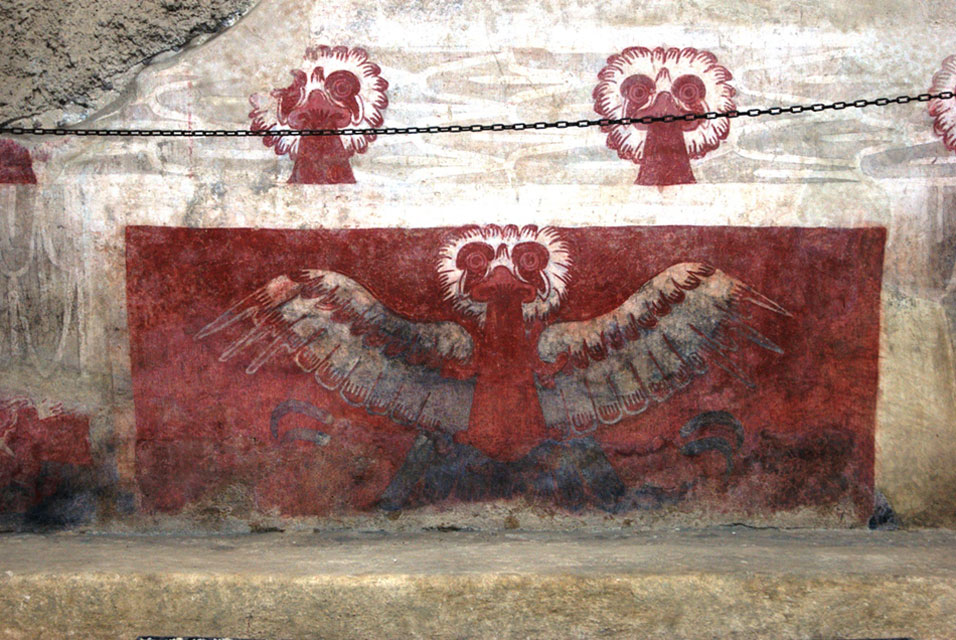The Tetitla compound, in Teotihuacan Archaeological Zone outside of Mexico City, is renown for magnificent pre-Spanish murals dating to between 600 and 700 A.D. Restorers from the National Institute of Anthropology and History have been working on half of the murals for 2 years and now some of their hard work is on public view.
The conservation work has thus far focused on 8 of the 16 murals which are in particularly damaged condition from the constant battering of sun, wind, dust, moisture and all around hard living.
“Intervention began in September 2007, conducting scientific research and taking pigment samples to be analyzed with ultraviolet technology, which allows knowing mineral composition. Graphic registers made after the discovery, 70 years ago, were studied as well,” [said Jaime Cama Villafranca, expert from the National School of Conservation, Restoration and Museography].
Recovery of the black pigment of Las Aguilas mural was achieved, which was no longer perceived by the naked eye. “The mural presented eagle’s heads painted in red, floating on a white space”.
“After analyzing it, we found rests of black lines that united the heads. We restored the black feathers described in archaeological reports of the 1940’s decade”.

It was no easy task. Not only did restorers have to repair pigment lost from layer erosion and humidity-generated salinization, but they had to combat structural problems in the buildings themselves. They could hardly repair a mural while the ceiling was leaking and the floor eroding.
Tetitla is thought to have been a ritzy neighborhood in the ancient city, mainly because the extremely colorful and detailed wall art suggests people with discretionary income cared to beautify the area.